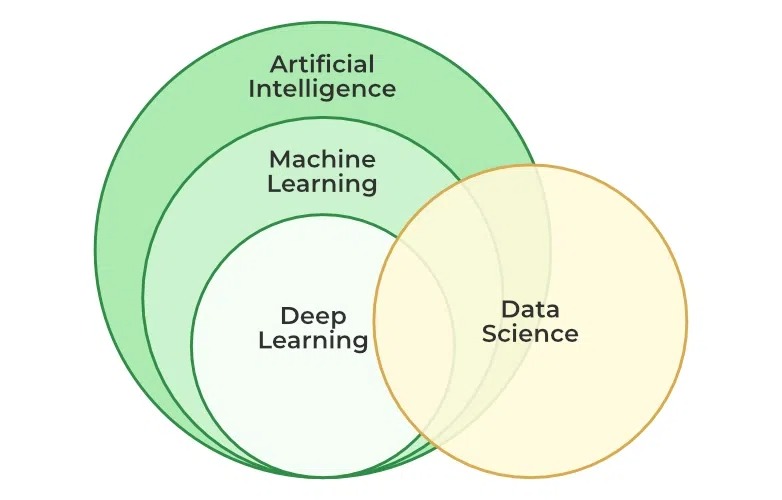Machine Leaning
Introduction
Machine learning is a branch of artificial intelligence (AI) that focuses on developing algorithms and techniques that allow computers to learn from and make predictions or decisions based on data, without being explicitly programmed to perform specific tasks. In traditional programming, humans provide explicit instructions to computers to perform tasks, whereas in machine learning, algorithms use data to learn patterns and make predictions or decisions.
Another Way to Understand machine learning:
Imagine you have a friend who loves to play a guessing game. You show them pictures of different animals, and they try to guess what each animal is. At first, they might not be very good at guessing, but as you show them more and more pictures and tell them the correct answers, they start to get better. Eventually, they can guess the animals pretty accurately without you needing to tell them the answers.
Now, think of a computer as your friend in this game. In machine learning, we give the computer lots of examples, like pictures of animals with their names. The computer looks at these examples and tries to figure out patterns on its own, without us telling it exactly what to look for. Then, when we show it a new picture of an animal, it can guess what it is based on the patterns it learned from the examples.
So, machine learning is like teaching a computer to learn from examples and make its own decisions or predictions based on what it learns. It's a way for computers to get smarter by themselves!
Let’s take some examples:
Example 1:
Imagine you have an email inbox that receives lots of messages every day, some of which are spam (unwanted or unsolicited emails) and some of which are legitimate. You want to automatically filter out the spam and only see the important emails.
Here's how machine learning can help:
- Training Data: Initially, you provide the email system with a large dataset of emails that are labeled as either spam or not spam (often called "ham"). These emails serve as examples for the system to learn from.
- Feature Extraction: The system analyzes the content and characteristics of each email to extract features. These features could include the words used in the email, the sender's email address, the presence of links or attachments, and so on.
- Algorithm Training: Using the labeled dataset and the extracted features, the machine learning algorithm learns patterns that distinguish spam emails from legitimate ones. It figures out which features are more indicative of spam and which are more indicative of legitimate emails.
- Testing and Validation: The system is then tested on a separate dataset to see how well it performs. This helps ensure that it can accurately classify emails as spam or not spam.
- Deployment: Once the system performs well on the test dataset, it can be deployed to automatically filter incoming emails in real-time. New emails are classified as spam or not spam based on the patterns learned during training.
Over time, as the system encounters more emails and receives feedback on its classifications (e.g., when you mark an email as spam or move it to your inbox), it can continue to learn and improve its accuracy.
So, machine learning helps email systems automatically filter out spam, saving users time and reducing the annoyance of dealing with unwanted emails.
Example 2:
Let's take Netflix as an example:
- Data Collection: Netflix collects data about its users' viewing habits, such as the movies or TV shows they watch, how long they watch them, which genres they prefer, and even when they watch.
- User Profiles: Based on this data, Netflix builds profiles for each user, representing their preferences and interests. For example, if a user frequently watches romantic comedies and science fiction movies but rarely watches horror films, their profile will reflect these preferences.
- Content Analysis: Similarly, Netflix analyses its vast library of movies and TV shows, categorizing them by genre, actors, directors, ratings, and more.
- Recommendation Analysis: Using machine learning algorithms, Netflix matches user profiles with content characteristics to make personalized recommendations. For example, if the algorithm detects that a user with a preference for romantic comedies has not yet watched a popular romantic comedy movie, it may suggest that movie to them.
- Feedback Loop: When users interact with the recommendations (e.g., by watching a recommended movie or ignoring it), Netflix gathers feedback. This feedback is used to improve the recommendation algorithm further. If a user enjoys a recommended movie, similar movies might be suggested in the future.
- Real-time Adaption: The recommendation system continuously adapts to changes in user behavior and preferences. As users watch new content or their preferences evolve over time, the system updates its recommendations accordingly.
Overall, machine learning powers recommendation systems to provide users with personalized suggestions, enhancing their experience by helping them discover content they are likely to enjoy based on their past behavior and preferences.


